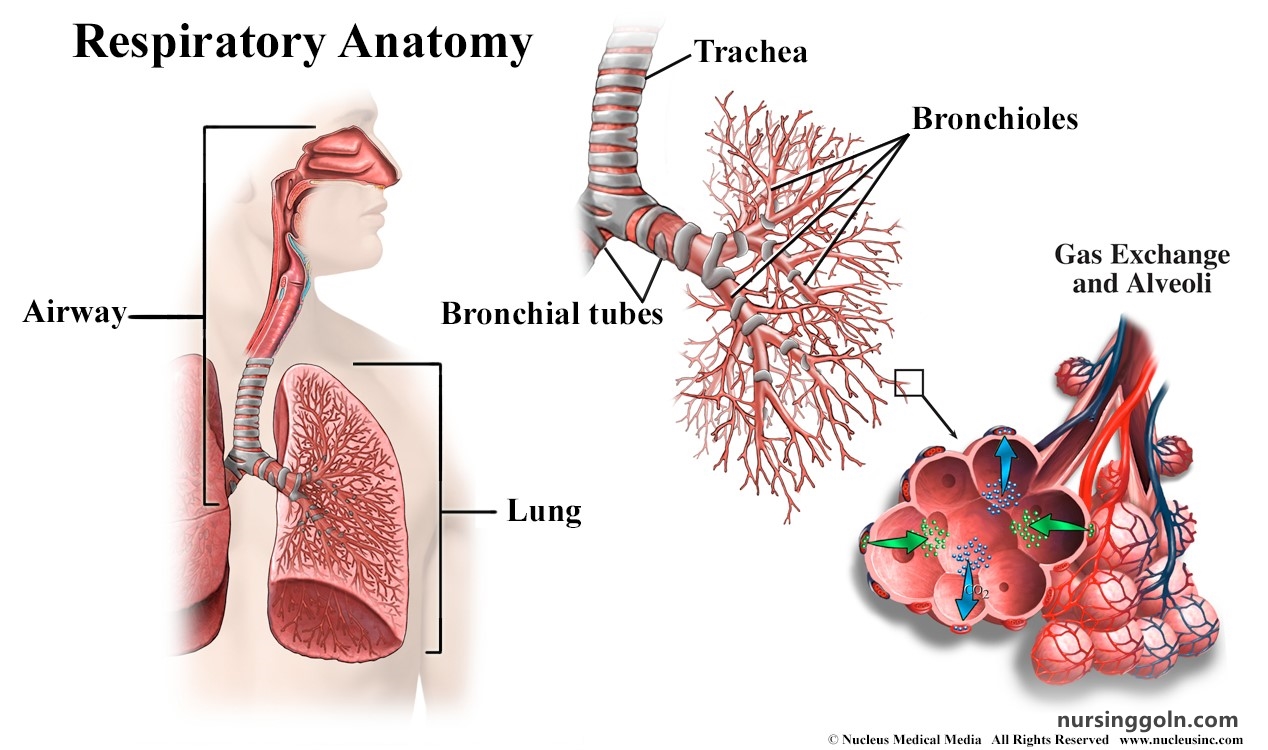Today our topic of discussion is ” Gas Exchange “. Our every breath, from the gentle ones taken in sleep to the deep intakes after strenuous activity, plays a part in a critical function – gas exchange. Beyond the simple act of inhaling and exhaling lies a complex mechanism that fuels every cellular function in our body. Let’s embark on a journey to understand this incredible process.

Gas Exchange: The Respiratory System
1. Introduction
Gas exchange is the cornerstone of respiratory physiology. It is the process where oxygen is imbibed from the atmosphere and delivered to cells, and carbon dioxide, a metabolic waste, is expelled. This exchange occurs at two main sites: the lungs and the body’s tissues.
2. The Stage for Gas Exchange: The Alveoli
Located at the terminal end of the bronchioles are the alveoli, tiny sac-like structures. Their massive combined surface area, thin walls, and rich blood supply make them perfectly designed for efficient gas exchange.
3. Principles of Gas Exchange
Gas exchange relies on two key principles:
- Simple Diffusion: Gases move from areas of high concentration to low concentration.
- Partial Pressure Gradient: Each gas in a mixture exerts a partial pressure. The difference in these pressures drives the movement of gases.
4. The Lung Alveoli: External Respiration
- Oxygen: It diffuses from the alveoli (high oxygen concentration) into the capillary blood (lower oxygen concentration) until equilibrium is achieved.
- Carbon Dioxide: It moves from the blood (where its concentration is higher) into the alveoli (lower concentration) to be exhaled.

5. Oxygen Transport in Blood
- Hemoglobin: Over 98% of the oxygen in blood binds with hemoglobin, a protein in red blood cells, to form oxyhemoglobin.
- Dissolved in Plasma: A small percentage of oxygen remains dissolved in the blood plasma.
6. Carbon Dioxide Transport
Carbon dioxide can be transported in three main ways:
- Bicarbonate Ion: Most of the carbon dioxide reacts with water to form bicarbonate ions, facilitated by the enzyme carbonic anhydrase.
- Carbamino Compounds: Around 20% binds with hemoglobin to form carbamino compounds.
- Dissolved Gas: About 7% of carbon dioxide remains dissolved in plasma.

7. The Bohr Effect: Nature’s Fine-tuning
The Bohr effect describes how, at the tissue level, increased carbon dioxide levels (indicative of active metabolism) reduce hemoglobin’s affinity for oxygen, thus promoting oxygen release. Conversely, in the lungs, decreased carbon dioxide levels enhance oxygen binding to hemoglobin.
8. Gas Exchange at the Tissues: Internal Respiration
Here, the gradients reverse:
- Oxygen: Diffuses from the blood (high concentration) to the body’s tissues (lower concentration).
- Carbon Dioxide: Produced as a metabolic waste, its concentration is higher in the tissues. It diffuses into the blood to be transported to the lungs.
9. The Influence of External Factors
- Altitude: Higher altitudes have lower oxygen levels, which can affect the rate of diffusion.
- Respiratory Diseases: Conditions like emphysema or pulmonary fibrosis can compromise alveolar structure and function, impacting gas exchange.
- Carbon Monoxide: This toxic gas competes with oxygen for binding sites on hemoglobin. Even low concentrations can be lethal as it binds 200 times more strongly than oxygen.

10. Physiological Adjustments
- Breathing Rate: An elevated carbon dioxide level, more than low oxygen levels, triggers an increased breathing rate to expel this gas more efficiently.
- Diving Reflex: Seen in aquatic mammals and humans, this reflex optimizes oxygen usage when underwater.
11. Conclusion
Gas exchange, the silent symphony of life, exemplifies the intricacies and efficiencies of our physiological systems. Every breath we take is a testament to a process honed by millions of years of evolution. As we go about our daily lives, every cell in our body relies on this exquisite balance of inhalation and exhalation, of giving and receiving, reminding us of the delicate equilibrium that sustains life.
Read more:
